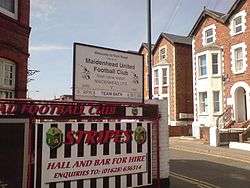Maidenhead
| Maidenhead | |
|---|---|
 Thames Riviera Hotel (left) and Maidenhead Bridge (built 1777) from across the River Thames | |
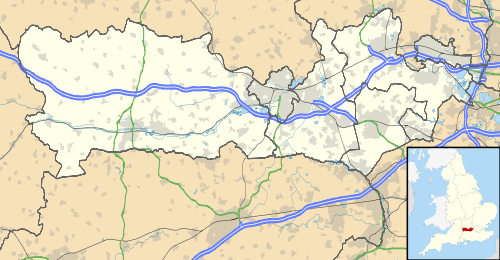 Maidenhead Maidenhead shown within Berkshire | |
| Population | 73,404 |
| OS grid reference | SU889811 |
| • London | 31 mi (50 km) |
| Unitary authority | |
| Ceremonial county | |
| Region | |
| Country | England |
| Sovereign state | United Kingdom |
| Post town | MAIDENHEAD |
| Postcode district | SL6 |
| Dialling code | 01628 |
| Police | Thames Valley |
| Fire | Royal Berkshire |
| Ambulance | South Central |
| EU Parliament | South East England |
| UK Parliament | |
Maidenhead is a large market town in Berkshire, England, on the south-western bank of the River Thames. With a population of about 73,000, Maidenhead is the largest town in the Royal Borough of Windsor and Maidenhead. The town is situated 31 miles (50 km) west of London, 13 miles (21 km) northeast of Reading, 32 miles (51 km) southeast of Oxford and 7 miles (11 km) from both Henley on Thames and Windsor.
History

The antiquary John Leland claimed that the area around Maidenhead's present town centre was a small Roman settlement called Alaunodunum. He stated that it had all but disappeared by the end of the Roman occupation. Although his source is unknown, there is documented and physical evidence of Roman settlement in the town. There are two well known villa sites in the town, one being in the suburb of Cox Green, and the other just west of the town centre on Castle Hill. This villa sat on the route of the Camlet Way which was a Roman road linking Silchester (Calleva Atrebatum) and Colchester (Camulodunum) via St Albans,(Verulamium) and passes through the present town centre. Remnants of the road have been unearthed at various locations nearby, but its exact route is unclear.
Maidenhead's name stems from the riverside area where the first "New wharf" or "Maiden Hythe" was built, as early as Saxon times. In the year 870, an army of Danes invaded the kingdom of Wessex. They disembarked from their longboats by the wharf and ferry crossing at Maidenhead and fought their way over land to Reading where they set up camp and made it their regional power base.[1] The area of the present town centre was originally a small Anglo-Saxon town known as "South Ellington". The town would have likely developed on the Camlet Way on the site of Alaunodunum as the Bath Road was not re routed until the 13th century. Maidenhead is recorded in the Domesday Book as the settlement of Ellington in the hundred of Beynhurst.[2]
A wooden bridge was erected across the river in about 1280 to replace the ferry in South Ellington.[3] The Great West Road to Reading, Gloucester and Bristol was diverted over the new bridge. Previously, it had kept to the north bank and crossed the Thames by ford at Cookham, and the medieval town, later to become Maidenhead grew up on the site of Alaunodunum and South Ellington, between the new bridge and the bottom of Castle Hill.[4] Within a few years a new wharf was constructed next to the bridge to replace the old Saxon wharf which needed replacing. At this time, the South Ellington name was dropped with the town becoming known as Maidenhythe (literally meaning "new wharf"). The earliest record of this name change is in the Bray Court manorial rolls of 1296.[3]
The new bridge and wharf led to the growth of medieval Maidenhead as a river port and market town. The market was held outside the old town hall which was set back from the High Street to form the market square. Maidenhead also became the main stopping point for coaches on journeys between London, Gloucester and Bath and the town became populated with numerous inns. By the mid 18th century, Maidenhead had become one of the busiest coaching towns in England with over ninety coaches a day passing through the town. The late 18th century Bear Hotel on the High Street is the best of the town's old coaching inns surviving to this day.
The current Maidenhead Bridge, a local landmark, dates from 1777 and was built at a cost of £19,000.
King Charles I met his children for the last time before his execution in 1649 at the Greyhound Inn[5] on the High Street, the site of which is now a branch of the NatWest Bank. A plaque commemorates their meeting.
When the Great Western Railway came to the town, it began to expand. Muddy roads were replaced and public services were installed. The High Street began to change again, and substantial Victorian red brick architecture began to appear throughout the town. Maidenhead became its own entity in 1894, being split from the civil parishes of both Bray and Cookham.
Maidenhead Citadel Corps of the Salvation Army was first opened in the town in the mid-1880s. Maidenhead Citadel Band was soon founded in 1886 by Bandmaster William Thomas, who later became mayor of the town.
By Edwardian times, nearby Boulter's Lock became a favoured resort, especially on Ascot Sunday, and Skindles Hotel developed a reputation for illicit liaisons.[6]
Governance
The town is part of the Royal Borough of Windsor and Maidenhead, with an urban population of around 95,000. It was previously an independent municipal borough. Maidenhead is one of the safest Conservative seats in the country, and the current MP is Theresa May of the Conservative Party, who was first elected in 1997 and has served as Prime Minister of the United Kingdom since 13 July 2016. The mayor of Windsor & Maidenhead is Councillor Paul Lion (Conservative).[7]
Geography
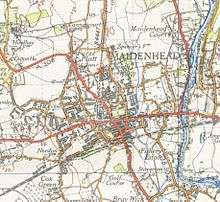
The Maidenhead urban area includes urban and suburban regions within the bounds of the town, called Maidenhead Court, North Town, Furze Platt (which in 2012 gained a conservation area), Pinkneys Green, Highway, Tittle Row, Boyn Hill, Fishery and Bray Wick; as well as built-up areas in surrounding civil parishes: Cox Green and Altwood in Cox Green parish, Woodlands Park in White Waltham parish, and part of Bray Wick in Bray parish. Bray village is linked to Maidenhead by the exclusive Fishery Estate which lies on the banks of the Thames. To the east, on the opposite side of the river from Maidenhead, is the large village of Taplow in Buckinghamshire which almost adjoins the suburban village of Burnham, Buckinghamshire, which is in itself part of the urban area of the large, industrial town of Slough. To the north are the Cookhams, Cookham Village, Cookham Rise and Cookham Dean. To the west is the area of Pinkneys Green. These lie south of the Berkshire-Buckinghamshire border, which is formed by the River Thames (which then bends southwards to form the Maidenhead-Taplow border). To the south is the village of Holyport. Continuing by road to the South-East leads to the historic, royal twin towns of Windsor and Eton.
Maidenhead was originally the planned western terminus for the Crossrail line (to and through London) until Reading station, situated 13 miles (21 km) southwest of Maidenhead, was chosen.
Maidenhead lies immediately west of the Taplow ridge; a wooded spur of the Chilterns which rises dramatically above one of the most scenic stretches of the Thames. The ridge is crowned by the spectacular Cliveden House which can be seen from various parts of the town.
Maidenhead has a site of Special Scientific Interest (SSSI) in the northern outskirts of the town called Cannoncourt Farm Pit, where the largest hand axe of the paleolithic era in Britain was discovered.[8][9] The town also has a local nature reserve called The Gullet.[10]
On 12 July 1901 Maidenhead entered the UK Weather Records with the Highest 60-min total rainfall at 92 mm (3.6 in). As of July 2015, this record remains.[11]
Landmarks

Maidenhead clock tower was built for Queen Victoria's diamond jubilee and is located outside the railway station.

Maidenhead Bridge was built in 1777. It takes the A4 over the Thames to join Maidenhead to Taplow.
All Saints' Church, Boyne Hill was completed in 1857 is one of the finest examples of the early work of the architect G. E. Street. The site is also regarded by many as the premier architectural site in the town. The church, consecrated on 2 December 1857 by Bishop Samuel Wilberforce, became the first ecclesiastical parish in the Borough of Maidenhead.[12]
Boulter's Lock is a lock on the river Thames on the east side of Maidenhead. It adjoins Ray Mill Island.
Character
Maidenhead has a long history of settlement, going back to the Anglo-Saxon and Roman periods. Despite this, there are no visible architectural remains in the present day town to show this.
Although there are attractive residential and green areas in and around Maidenhead, the historic heart of the town has been redeveloped, primarily with office space, high technology company headquarters and apartments, making it one of the key business and commuter towns of the Silicon Corridor. This has happened in piecemeal fashion over the last forty years and unfortunately, Maidenhead town centre has lost most many historic buildings and much of its traditional English market town character. The High Street and Bridge Street areas only possess one heavily restored Medieval building and a handful of Georgian buildings in the Chapel Arches area.
Research by the New Economics Foundation rated Maidenhead as an example of a clone town[13] and the town centre is regarded as in need of improvement. In December 2007, the Royal Borough of Windsor and Maidenhead set up the Partnership for the Regeneration of Maidenhead (PRoM), which in October 2008 launched a comprehensive 20 Year Vision and Action Plan for rejuvenating the town centre. Launch of the plan coincided with confirmation by central government that Maidenhead will be part of the new Crossrail project.[14] PRoM's plans highlight five key developments which will help shape the town for the future. A large new retail and residential development called 'The Landing' is due for construction shortly. Additionally there will be an upgraded train station and transport interchange, movement of the leisure centre, bowls club and improved links between Kidwells Park and the High Street.
The Chapel Arches retail development is under construction. Part of the scheme involves restoring the old Thames tributaries which run through a historic section of the town centre as an attractive feature and amenity in the town. New apartments, boutique stores and restaurants, bars, and cafes are to be a feature of this new waterfront quarter of the town centre. The adjoining historic section of the High Street around the 18th Century Chapel Arches Bridge has been restored as part of the development. Existing Georgian and Victorian buildings have been rejuvenated and the adjoining new builds have been sensitively constructed in the same historic style to bring back a sense of history and lost heritage to this part of the town centre.
Maidenhead was home to the conference that agreed on the Maidenhead Locator System standard in 1980. It is located in grid square IO91pm.
The average house price in the Royal Borough of Windsor and Maidenhead in 2011 was £461,421.[15]
Community facilities

Maidenhead offers High Street shopping facilities including Nicholson's Centre, a shopping centre on the site of Nicholson's brewery. The town also offers an eight-screen Odeon multiplex cinema, a leisure centre (with swimming pool), called the Magnet, and a bowling alley. Help with shopping in the town centre can be provided by the Shopmobility service on the ground floor of Nicholson's car park.
Maidenhead Heritage Centre and Museum was established in 1993 and moved to permanent premises in a former pub in Park Street[16] in 2006.
In the Boyne Hill area there is Norden Farm Centre for the Arts (an arts centre including a theatre).
Waltham Place Estate on Church Hill includes an ornamental garden integrated within a 200-acre (80 ha) organic and biodynamic farm estate. It is promoted by the Campaign to Protect Rural England.[17]
The Reitlinger Open Space on Guards Club Road is named after Henry Reitlinger, a leading collector of fine art. On his death in 1950, the collection was vested in a trust, the Henry Reitlinger Bequest. The trustees were his adopted daughter, Mrs. M. Cocke, and a Maidenhead solicitor, who chose to house the collection at Oldfield House, now a private residence; the building dates back to 1892.[18]
Transport
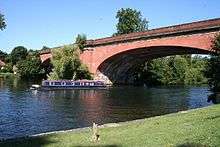
The (Brunel-built) Great Western Main Line passes through the town, calling at Maidenhead railway station and offering frequent, direct services to London, Reading, Newbury, Didcot and Oxford. Additionally, there are less frequent direct services to Banbury, Hereford, Worcester and Great Malvern. It passes over Brunel's Maidenhead Railway Bridge (known locally as the Sounding Arch), famous for its flat brick arches.[2] Maidenhead Station is the beginning of the Marlow Branch Line from Maidenhead to Marlow, Buckinghamshire, Furze Platt railway station on this branch also serves the northern area of Maidenhead. Rail services have been provided by Great Western since 2003-04. From December 2019 the station will form part of the western section of the Elizabeth Line (Crossrail).[19]
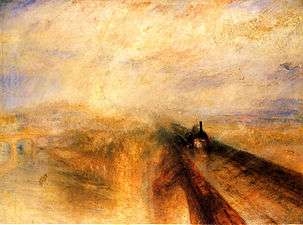
Local bus services are provided by First Berkshire & The Thames Valley, Arriva Shires & Essex and Courtney Coaches.
The A4 runs through the town and crosses the Thames over Maidenhead Bridge. The town lies adjacent to junction 8/9 on the M4 motorway and is accessed via the A404(M) and A308(M). The A308(M), A404(M) and A404 form the Marlow and Maidenhead bypass which also acts as an important link between the M4, to the south of the town, and M40 at High Wycombe.
The River Thames runs 1⁄2 mile (800 m) to the east of the town centre, and York Stream, which runs through the town centre, connects to the Thames via a system of disused waterways. A renewal scheme is in progress to reopen these waterways. The Jubilee River, part of the flood defence scheme, begins above Boulter's Lock nearby.
Employment
Maidenhead is in England's Silicon Corridor along the M4 motorway west of London. Many residents commute to work in London, or to the towns of Slough and Reading.
Maidenhead's industries include: software, plastics, pharmaceuticals, printing and telecommunications.
Sport
Situated on the River Thames, the town is a rowing centre. Maidenhead Rowing Club organises the Maidenhead Regatta which, along with Marlow Regatta and Henley Regatta, is often seen as a testing ground for olympic rowing athletes. Maidenhead has often seen winners go on to represent the United Kingdom at the Olympic games.
The town's football team, Maidenhead United, play at York Road, which is the oldest football ground in the world continuously used by the same team. Maidenhead United were crowned champions of National League South at the end of the 2016/17 season. Due to this, the team were automatically promoted to the National League (fifth tier of English Football) for the 2017/18 season.
The Maidenhead Rugby Club was founded in 1921 and is the largest organised sports team in the town. It consists of four men's teams, a women's team and a large youth programme. The men's team attracts international talent from all over the world including American Tobin Thompson and Fijian Antinio Mawara.
In September 2011 the town hosted the first ever Maidenhead Half Marathon.
The town is also home to Maidenhead Sailing Club at Summerleaze Lake which is home to one of the largest Albacore fleets in the area. Maidenhead Golf Club was founded in 1896 and is situated close by the town centre and station in Shoppenhangers Road. The course was designed by the eminent golf architect Harry S. Colt.
FPD- A Senior social football team has played teams from the twin towns starting with a home and away leg with Bad Godesberg. Future fixtures against St-Cloud and Frascati to follow.
Institutions
The local newspaper is The Maidenhead Advertiser.
Maidenhead has been the home of Maidenhead Citadel Band of the Salvation Army since 1886.
The head office of the Commonwealth War Graves Commission is based in Maidenhead on Marlow Road.
Further educational institutions
- Berkshire College of Agriculture is based in Maidenhead.
Secondary schools
- Altwood Church of England School
- Cox Green School
- Desborough College (previously Maidenhead Grammar School)
- Furze Platt Senior School
- Newlands Girls' School (previously County High School for Girls, Maidenhead)
Primary schools
- All Saints CofE Junior School
- Courthouse Junior School
- Furze Platt Infant School (caters for Reception - Year 2)
- Furze Platt Junior School (caters for Year 3-6)
- Holyport Primary School
- Larchfield
- Lowbrook Academy
- Oldfield Primary School
- Riverside Primary School
- St Edmund Campion Primary School (RC)
- St. Lukes CofE School
- St. Mary's Primary School (RC)
- Wessex Primary School
- White Waltham C of E Primary School
- Woodlands Park Primary School
Independent schools
- Beech Lodge School (co-ed 7-17)
- Claires Court (all-through 3-18:- co-ed Nursery [3-5]; girls [4-16] & boys [4-16] in a diamond shape; co-ed Sixth Form)
- Herries School (co-ed 3-11)
- Highfield School (boys 2-4; girls 2–11)
- St Piran's School (co-ed 3–11)
The closest higher education institution is Buckinghamshire New University in High Wycombe 14.5 km (9 mi) to the north. The University of Reading and University of West London (Berkshire Institute of Health-Reading) are both approximately 21 km (13 mi) to the south-west.
Twin towns
Maidenhead is twinned with:



.svg.png)
Each year youths from the four towns and Berlin-Steglitz (twinned with Bad Godesberg) compete against one another in sports such as volleyball, football, athletics and swimming in the Twin Towns Sports Competition, hosted in turn by each of the five towns. In Maidenhead town centre there are roads named after three of the twin towns (Bad Godesberg Way, Frascati Way and St Cloud Way). Local schools often participate in student exchanges with pupils being exchanged between schools within the twinned towns.
Notable people and businesses
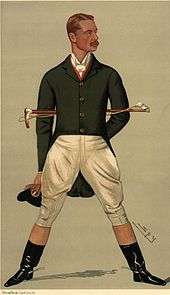
A number of notable figures can be counted amongst Maidenhead's current and former residents. The actress Diana Dors (1931-1984) resided for much of her life in the town,[22] in several properties, while the broadcaster Richard Dimbleby (1913-1965) lived for sometime on Boulter's Island. Maidenhead's riverside location has also drawn many celebrities, including former broadcaster Michael Parkinson (b. 1935). The Spice Girls shared a house in Maidenhead for a year preceding their rise to stardom.[23][24] In her 1988 LWT special, An Audience with Victoria Wood, Victoria Wood said "The celebrities have flocked [to the studio]. I know that Maidenhead and Barnes are like ghost towns this evening."
Television personality and musician Rolf Harris lived for over 60 years in Bray.
Author Hugh Lofting (1886-1947), creator of Doctor Dolittle, was born in Maidenhead.[25]
Essayist and novelist Nick Hornby (b. 1957) was educated at Maidenhead Grammar School (now Desborough School),[26] as were children's television presenter and radio show host Toby Anstis (b. 1968),[27] author and broadcaster John O'Farrell (b. 1962),[28] athlete Mark Richardson (b. 1972) and well known "Dragon" Peter Jones (b. 1966).
The film director brothers Roy (1913-2001) and John Boulting(1913-1985) were born in Bray village on the outskirts of Maidenhead in November 1913.
Professional footballer Andy King grew up in Maidenhead, and attended Furze Platt Senior School. He plays for Leicester City and helped them win the Premier League title in 2016.
Pinkneys Green in the town was home to Sir Nicholas Winton (1909-2015), whose heroic efforts rescued 669 Jewish children from Czechoslovakia just before the outbreak of World War II. There is a statue of him at Maidenhead Railway Station.
Arthur and Ron Hacker formed the company Hacker Radio Ltd in Maidenhead in 1959, producers of fine transistor radios that for a time in the 1970s brandished the Royal Warrant of Appointment
The town was also home to Colonel Sir Walter de Frece (1870-1935) and Lady Matilda de Frece, better known as Vesta Tilley (1864-1952).
Former disabled London Marathon competitor Patrick Sheehy lived in the town for just over 3 years.
Edd China (1971-), an English TV presenter, mechanic, motor specialist and inventor lives and works here.
Petre Nikiloski (b. 1959), Macedonian born British based visual artist who lives and works in Maidenhead.
Mary Ann Browne (1812–1845) was a British poet and writer of musical scores.
References
- ↑ Nash Ford, David (2001). "Royal Berkshire History: Maidenhead- Important Thames Crossing point". Nash Ford Publishing.
- 1 2 Ackroyd, Peter (2007). Thames: sacred river. Random House. pp. 425–6. ISBN 0-7011-7284-3.
- 1 2 Phillips, Geoffrey (1981). Thames Crossings. David and Charles. ISBN 0-7153-8202-0.
- ↑ Higham, Roger (1977). Berkshire and the Vale of the White Horse. London: Batsford.
- ↑ William Godwin ''History of the Commonwealth of England: To the death of Charles I'' H. Colburn, 1826. Books.google.com. Retrieved 27 November 2010.
- ↑ Paul Goldsack River Thames:In the Footsteps of the Famous English Heritage/Bradt 2003
- ↑ "The Mayoralty". Royal Borough of Windsor and Maidenhead. Archived from the original on 13 May 2006. Retrieved 24 April 2013.
- ↑ "Magic Map Application". Magic.defra.gov.uk. Retrieved 19 March 2017.
- ↑ "Archaeological Sediments and Soils: Analysis, Interpretation and Management - Google Books". Books.google.co.uk. 16 June 2016. Retrieved 19 March 2017.
- ↑ "Natural England - Special Sites". Lnr.naturalengland.org.uk. Retrieved 1 May 2017.
- ↑ "5 amazing facts you didn't know about UK rain". WirralWeather.com. 24 July 2015. Archived from the original on 23 May 2016. Retrieved 11 August 2016.
- ↑ "History of All Saints Church – a unique complex". All Saints Church (eesearch by Mike Moss (1997)). Archived from the original on 26 February 2012. Retrieved 13 January 2013.
- ↑ "Clone towns – outside London". BBC News. London. 6 June 2005. Retrieved 9 August 2011.
- ↑ "Route window W25 Maidenhead station" (PDF). Retrieved 29 January 2011.
- ↑ according to the BBC website, which has taken its sources from HM Land Registry. Correct as of December 2011.
- ↑ "Charity Testimonials".
- ↑ Members Guide 2012, published by CPRE, 2012
- ↑ "Reitlinger Open Space". Royal Borough of Windsor and Maidenhead. Archived from the original on 16 December 2014.
- ↑ "Western section - Paddington to Heathrow and Reading". Crossrail. Retrieved 24 February 2017.
- ↑ "BBC Sport - Football - Ground record for Maidenhead". BBC News. 15 March 2011. Retrieved 9 August 2014.
- ↑ "British towns twinned with French towns [via WaybackMachine.com]". Archant Community Media Ltd. Archived from the original on 5 July 2013. Retrieved 20 July 2013.
- ↑ "Diana Dors – The Private Life and Times of Diana Dors. Diana Dors Pictures". Retrieved 9 August 2011.
- ↑ "Does your town have a surprising music secret?". BBC Music. 9 December 2016. Retrieved 9 December 2016.
- ↑ "Spice Girls Biography". Musicianguide.com. Retrieved 27 November 2010.
- ↑ "Hugh Lofting biography – bibliography – books at The Wee Web". Theweeweb.co.uk. 26 September 1947. Archived from the original on 16 July 2011. Retrieved 27 November 2010.
- ↑ Crawshaw, Steve (26 May 2001). "Nick Hornby: Mad about the boy". The Independent. London. Retrieved 12 May 2010.
- ↑ Rawlings, Kelly (7 March 2008). "DJ Toby Anstis returns to Desborough". Maidenhead Advertiser. Maidenhead. Archived from the original on 5 March 2016. Retrieved 9 August 2011.
- ↑ "Interview with John O'Farrell". Books at Transworld. Retrieved 27 November 2010.
